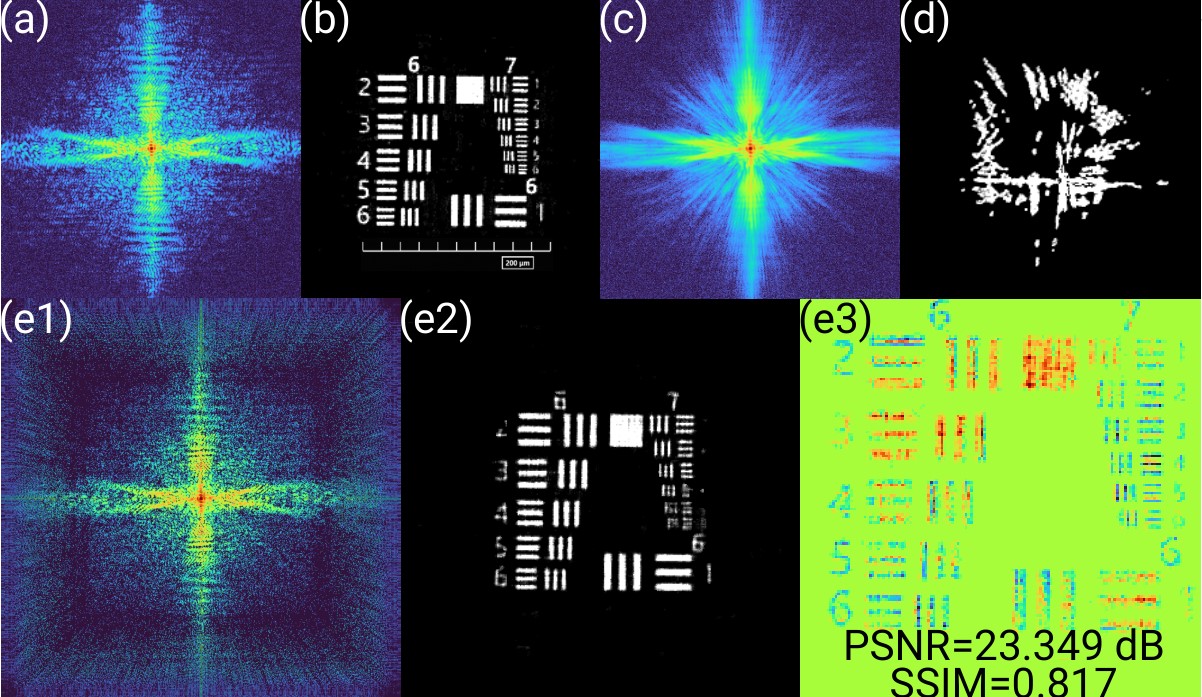Recently, a research group led by Prof. FU Yuxi and WANG Hushan from Xi’an Institute of Optics and Precision Mechanics, Chinese Academy of Sciences developed a snapshot ultra-broadband coherent diffractive imaging (CDI) method for attosecond imaging.
The research results were published in Photonics Research.
Attosecond pulses provide unprecedented temporal resolution and have found many applications in studying atoms and molecules. However, their broadband spectra, incompatible with the conventional imaging method, severely hinder the advancement of attosecond imaging frontier.
Therefore, the researchers developed a new imaging method, named Gradient Monochromatization with Fourier Transformation based pattern Mapping (GM-FTM), to resolve monochromatic patterns from broadband diffraction patterns, subsequently enabling image reconstruction through conventional CDI algorithms.
In specific, FTM was proposed to transform the lossless monochromatic pattern across each wavelength, then GM was deployed to solve monochromatic patterns. The solved patterns were then fed into conventional CDI algorithms to perform the final image reconstruction. The experiment results indicate that the method can achieve broadband CDI with high fidelity.
The researchers found that the method can provide great image quality and computational efficiency improvements compared to the state-of-the-art broadband imaging methods, and support a much broader bandwidth up to ~140%.
“The proposed method is a great step toward attosecond imaging with both ultra-high temporal and spatial resolutions.” said Prof. FU Yuxi.

Fig. Broadband coherent imaging with supercontinuum laser. (Image by XIOPM)
(published 30 August 2024)
Download: